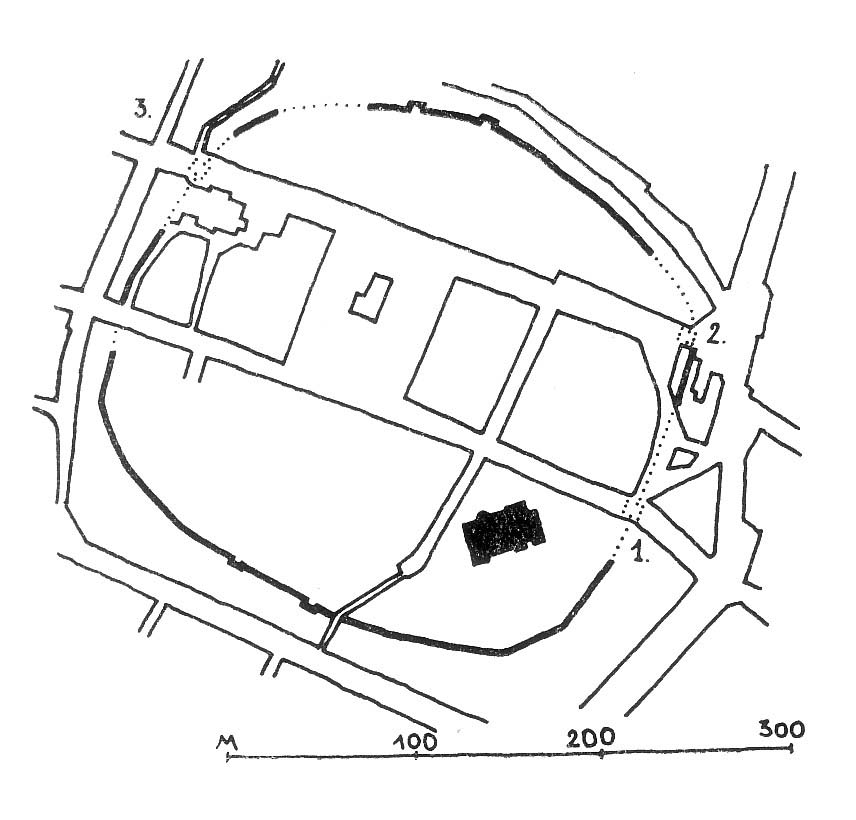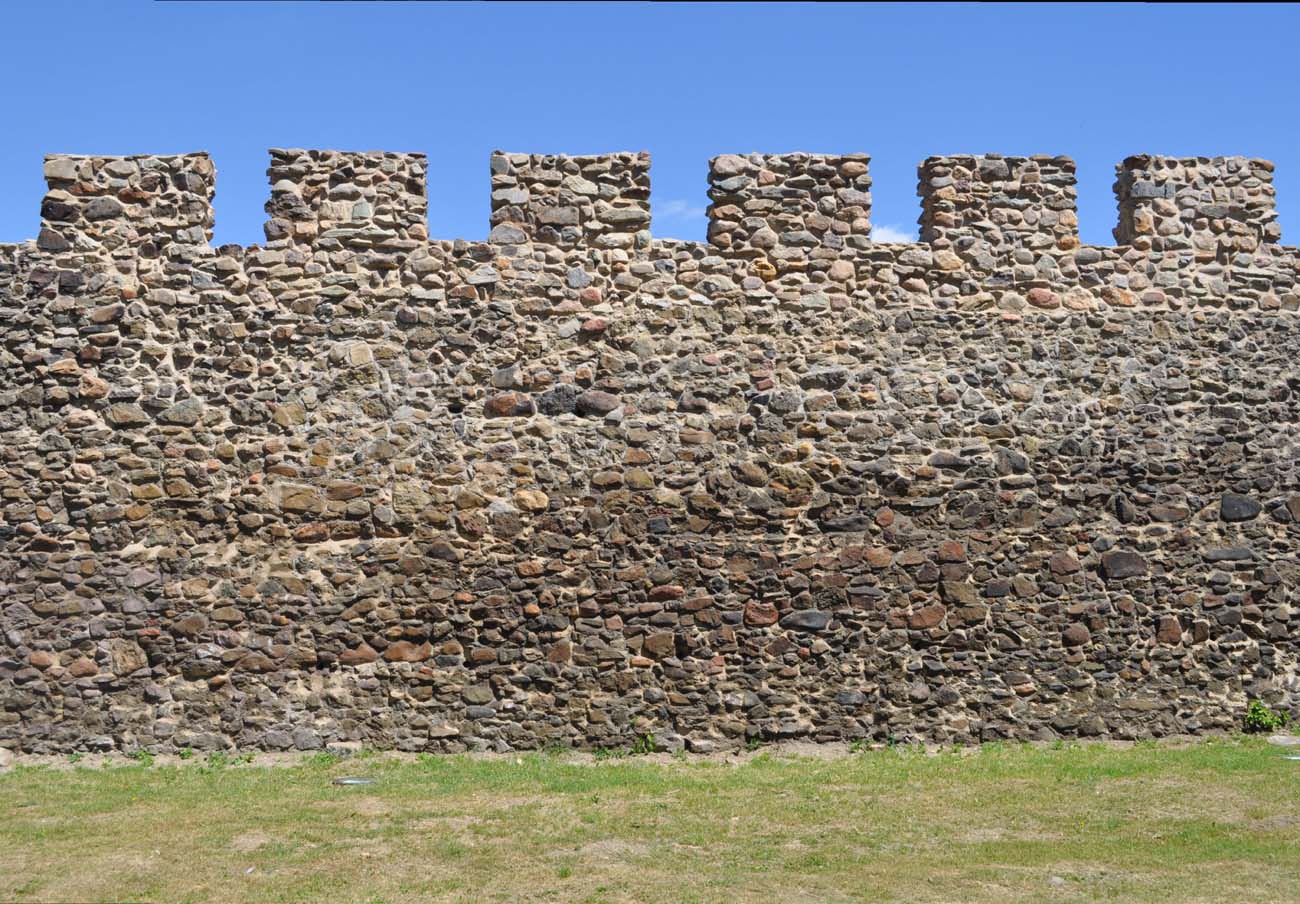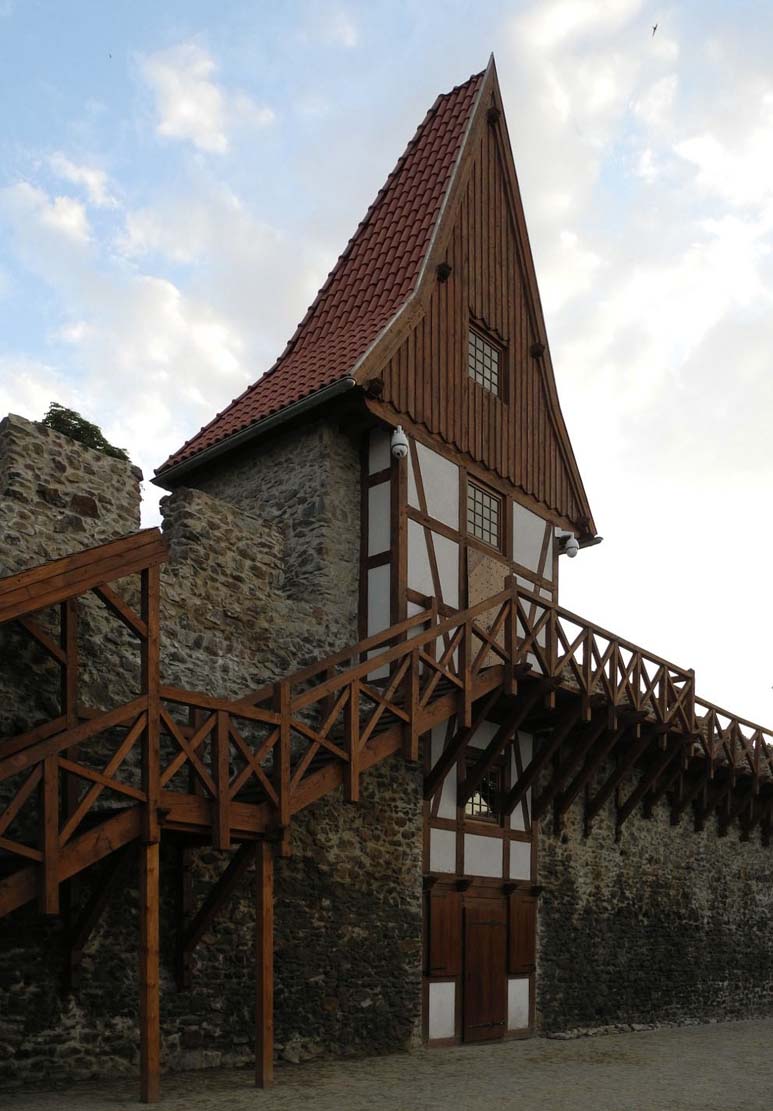History
In 1279 Świebodzice (German: Freiburg) received confirmation of the town charter and commercial and economic privileges. Thanks to this became one of the most significant centers in the region, although the town still did not have any stone walls, and at most wooden and earth fortifications. According to early modern chronicle records, the town walls were supposed to be founded by the prince of Świdnica and Jawor, Bolko I, at the end of the 13th century, but most likely the stone fortifications were erected only in the first half of the 14th century, perhaps in connection with the issuance of a privilege by Bolko II in 1337 confirming all rights and burdens of the townspeople of Świebodzice, or even in the second half of the fourteenth century or at the beginning of the 15th century . It were first mentioned only in 1419.
The first, serious baptism of fire, the fortifications of Świebodzice could pass in 1345, when the town was invaded by the Czech army of John of Bohemia, who was at war with the Polish kingdom of Casimir the Great, and at the same time with his ally Bolko II of Świdnica. The siege was repulsed by Świdnica, but the nearby Kamienna Góra was captured, so it is assumed that Świebodzice could also be conquered.
The fights for the town were better confirmed during the Hussite wars. In 1427, Świebodzice were on the route of the Taborite troops, which, according to the local tradition, were to attack the town’s fortifications three times. The defenders were to manage to repel the attackers and protect the town, but in 1430 the presence of a Hussite army in Świebodzice, returning from the victorious expedition, was confirmed by sources. Perhaps three years earlier the townspeople saved their property, possessions and life by concluding deals with the invaders like many other cities. A successful defense of a small town would be all the more unlikely that in 1428 the Hussite troops attacked and captured the nearby Książ Castle, which was to remain in their hands for another year.
After the end of the Hussite wars, Silesia plunged into chaos and anarchy compounded by banditry and private conflicts. The town and the castle in Świebodzice were to become the seat of the raubritters who organized plundering expeditions from there. In 1445, the then lord of the town and the Książ castle, Herman von Zettritz, was even to be excommunicated by the bishop of Wrocław, and Świebodzice was also cursed for storing stolen church goods there. It was only in 1463 that Czech king George of Poděbrady decided to introduce an order in Silesia. He captured the Książ castle, placing Birka von Nassidel on it, and then Hans von Schellendorf. The latter, as a supporter of Hussitism accused of robbery, in 1475 and 1477 became the target of Matthias Corvinus’s Hungarian troops, which in 1477 were also supposed to go to Świebodzice, although the effects of the fights at that time are unknown.
At the beginning of the 16th century, the town entered a period of stabilization and relative peace due to the purchase of local goods (the villages of Pełcznica, Ciernie and the castles of Książ, Rogowiec and Radosno) by Konrad von Hochberg. Worse times of wars, epidemics and economic difficulties came in the 17th century, when the value of medieval fortifications also significantly decreased due to the development of firearms. They were partially destroyed at the end of the Thirty Years’ War and in the great fire of the town in 1774, although earlier, during the Silesian wars, the town passed from hand to hand, and the fortifications did not constitute any obstacle. At the beginning of the 19th century, Napoleon’s army entered Świebodzice and ordered the demolition of the fortifications, fortunately not too conscientious. It was then that it was decided to lease the moat and ramparts to the townspeople, who later turned them into gardens.
Architecture
The town was founded on the eastern side of the Pełcznica River, in one of its gentle meanders. In plan, it had a shape similar to an oval or an ellipse with slightly longer sides located roughly on the north-west, south-east line, covering an area of about 9 ha. Inside the defensive perimeter, in the center of the town, there was a four-sided market square, connected to the gates by the road leading from the corners. The south-eastern corner of the town, in close proximity to the fortifications, was occupied by the parish church, separated with the cemetery from residential buildings. The town probably did not have an underwall street, but the area near the walls in the Middle Ages was occupied by the back, undeveloped parts of plots, covered with gardens and orchards of the townspeople. There was also a castle within Świebodzice, probably located in the eastern part of the town, near the Świdnica Gate. It probably had the form of a tower house on a rectangular plan, connected to the ring of the town wall.
The defensive walls were built of erratic, unworked stones. They formed only one ring, preceded from the outside by a moat and an earth rampart. They were topped with a defensive wall-walk placed on an offset and widened by a wooden porch, and a breastwork with battlement. The perimeter of the walls was reinforced with nine or ten four-sided half-towers, protruding strongly in front of the face of the neighboring curtains, one storey higher than them and initially open from the town side or closed with lighter half-timbered walls.
Initially, there were two and then three gates leading to the town. In the east there was the Świdnica Gate and Strzegom Gate (Lower gate), in the west the Bolków Gate (Upper Gate). All gates were placed in towers on a square plan, much higher than the half-towers and preceded by simple foregates since the late Middle Ages. These foregates extended towards the ditch and began right in front of it. In the first half of the 15th century, the walls were reinforced with additional earth ramparts.
Current state
The defensive walls of Świebodzice have been preserved on about 70 – 80% of the original perimeter. The most visible is the fragment from at Piłsudski Street in the southern part of the former circuit, where there is a roofed tower and a reconstructed porch of defenders. In addition, significant fragments of the town wall are on the north side, hidden at the back of the properties. The rectangular building, coupled with a section of the town defensive wall at the intersection of Jana Pawła II Square and Żeromskiego Street, is probably a remnant of the former castle. The house currently has the character of a modern tenement house, five storeys high, with walls made of unworked stone. Groin vaults have been preserved in its basement.
bibliography:
Boguszewicz A., Corona Silesiae. Zamki Piastów fürstenberskich na południowym pograniczu księstwa jaworskiego, świdnickiego i ziębickiego do połowy XIV wieku, Wrocław 2010.
Przyłęcki M., Mury obronne miast Dolnego Śląska, Wrocław 1970.
Świebodzice. Zarys monografii miasta, red. K.Matwijowski, Wrocław – Świebodzice 2001.
Wietrzyński R., Świebodzice. Miasto, ludzie, wydarzenia, Świdnica 2019.






